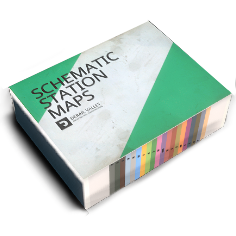Freno Gradual
Dependiendo del vehículo motorizado, hay dos formas de controlar la presión de la tubería del freno: con control gradual y la más antigua, mediante aplicación y afloje manual.
Self-Lapping
En los sistemas con control gradual, la presión de la tubería del freno se maneja automáticamente. El maquinista puede colocar la palanca del freno automático en cualquier posición dentro de un rango. Cuanto más se ajuste en la dirección de "aplicación", mayor será la fuerza de frenado y viceversa. La válvula maneja automáticamente el vaciado o la presurización de la tubería del freno dependiendo de la posición de la palanca.
Non-Self-Lapping
The non-self-lapping control valves are older. With them, the control lever manipulates the brake pipe pressure directly, and the process is more hands-on. The lever has a few fixed positions. Two of the positions, called “release” and “service” can be thought of as adding and releasing the brake pipe pressure, respectively. The position in-between them, called “lap”, is used to maintain whatever pressure is in the brake pipe. The furthest position, called “emergency”, releases pressure at the fastest possible rate.
By controlling the brake pipe pressure, you indirectly control the cylinder pressure, and thus, brake application.
Auxiliary reservoirs are partially drained whenever brakes are applied. When brakes are then released, it takes some time for the reservoirs to be recharged. The lap position, however, functions only if the auxiliary reservoirs are full. So, to stay in full control over non-self-lapping brakes it is recommended to not release when knowing that moments later braking may be needed again. Calculated, infrequent moves are advised instead.
Monitoring
With both control valve types it is crucial to monitor the brake pipe and cylinder gauges to fully understand the current brake state.
Conflicts
In case a train contains multiple motorized vehicles their control valves are in conflict. The conflict can be even more severe if there are mixed self-lapping and non-self-lapping valves in the train. To ensure safe operation it is necessary to cutout all excess control valves, other than the one intended to be used.
